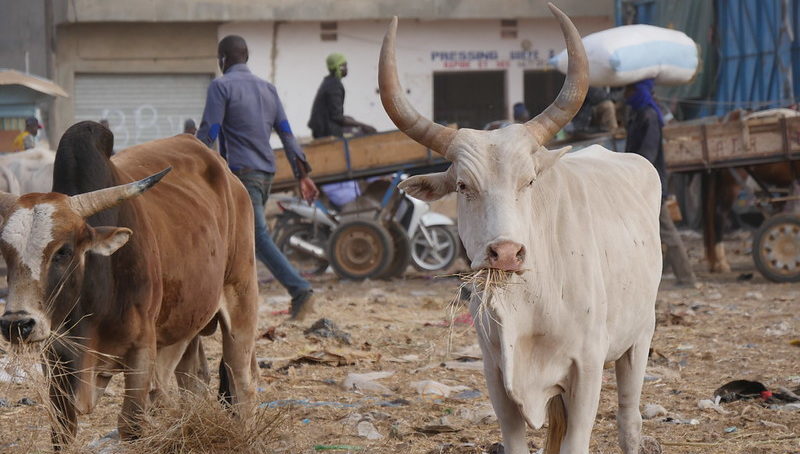Global human health has been marked by an unprecedented pandemic this year. The coronavirus outbreak has demonstrated how novel diseases can spread from close contacts between humans and animals. However, less well known is the high burden of endemic zoonotic diseases that infect billions of people every year, mainly in low- and middle-income countries.
Zoonoses, diseases that are transmitted from animals to humans, cause up to a third of the infectious disease burden in low- and middle-income countries, compared to less than 1% in high-income countries. In low- and middle-income countries livestock are often kept very close to people. Around 50% of all households in Africa and Southern Asia have livestock and often keep them where they live. Zoonotic diseases can spread directly from animals to humans (such as rabies from dog-bites), but they are more often transmitted via infected animal products and exposure to animal excreta, for instance through contaminated food, water or inadequate handwashing.
Keeping animals in or close to people’s home is often a necessity, as it reduces the probability of theft and facilitates feeding and care work. This close-to-people practice requires adequate measures to reduce the risk of zoonotic disease transmission. With proper management of excreta, the creation of clear barriers between animal and human space as well as hygiene measures such as handwashing can help reducing zoonoses in regions where livestock keeping is essential to livelihoods.
A workshop bringing sectors together
As a part of the Chickens and cows do not use toilets: What can we do about it? – workshop, speakers and participants from the WaSH (Water, Sanitation and Hygiene), health, livestock, environmental and agricultural sector were invited to participate. The concept of One Health has gained momentum in the past few years, as an approach to address issues related to human, animal and environmental health in a more holistic manner.
For example, conventional sanitation and hygiene interventions have focused on managing human waste through access to toilets and proper hygiene. However, in settings where people and livestock live close, complementary sanitation and hygiene measures are needed to reduce zoonoses as well as to improve animal health. In addition, safe and efficient reuse of both human and animal excreta is also important to maintain fertile soils and reduce pollution of ground– and surface water. Such “upgraded” WASH will require joint efforts of the WASH, livestock, agriculture and environment sectors.
Presentations from Sophie Boisson (WHO), Johanna Lindahl (ILRI, UU, SLU) and Björn Vinnerås (SLU) set the scene from the human, animal and environmental health (One Health) perspective. Each of them provided a picture of their own work, closely linked to animal excreta, but also pointed out the interconnectedness all three sectors and the need to find joint solutions.
In the discussion session, participants were divided into smaller groups and first discussed the challenges and opportunities of improving conditions on-site, i.e. in animal enclosures, protecting humans, and improved management of excreta. Gaps in research evidence and policy were discussed in a second round, which all participants felt was too short. The discussions reinforced the realization that a holistic and inter-sectoral approach to animal excreta and zoonotic diseases is needed.
